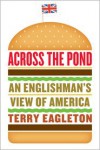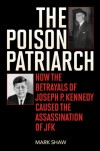Review


If you had kids or were one during the '90s or 2000s, you probably recognize the name Mary Pope Osborne; she's the author behind the wildly popular Magic Tree House series, and she's also the co-author of its companion series: the Magic Tree House Research Guides. The Magic Tree House Research Guides are nonfiction spin-offs of many of the fictional Magic Tree House books. A Magic Tree House book in which Jack and Annie visit the Middle Ages resulted in a nonfiction companion about castles, knights, and the medieval era; a Magic Tree House book in which Jack and Annie visit ancient Egypt resulted in a nonfiction companion about mummies, pyramids, and pre-Abrahamic Egypt; a Magic Tree House book in which Jack and Annie met Abraham Lincoln resulted in a nonfiction companion biography about him.
And here we have Dinosaurs, the first book of the Magic Tree House Research Guides series (which is currently still running under the updated title of Magic Tree House Fact Trackers) and a companion piece to the first book of the Magic Tree House series proper, Dinosaurs Before Dark. (My review of Dinosaurs Before Dark can be found here.) It's a spectacular way to introduce children--especially fans of Osborne's fiction--to the nonfiction genre and a plethora of well-researched topics ranging from horses to tornadoes to ancient Rome to Shakespeare and beyond.
One thing to remember about Dinosaurs, of course, is that it was published around the turn of the century, and so some of the information it offers is likely outdated now, though most of the topics it covers aren't subject to change any time soon.
Throughout Dinosaurs, a book of just over a hundred pages, Will and Mary Pope Osborne attempt to introduce readers to various prehistoric terms and concepts, including Pangea; the Mesozoic Era, Triassic Period, Jurassic Period, andCretaceous Period; the difference between fossils and bones; early paleontologists such as Mary Ann and Gideon Mantell, William Buckland, andRichard Owen; the method through which dinosaurs are named; the Bones Warsand the rivalry between Marsh and Cope; various mistakes made by paleontologists, including the Brontosaurus mistake, Cope's head/tail mix-up, andMantell's Iguanadon "horn" mistake; the theories about dinosaur's extinction, including the Climate Change Theory and the Asteroid Theory; the ongoing mysteries of dinosaur research, including whether any of them could see in color, how long they lived, and what kinds of sounds the various species made. Also included are chapters on carnivorous dinosaurs versus herbivorous dinosaurs (though the terms "carnivore" and "herbivore" are swapped out for "flesh-eaters" and "plant-eaters", respectively); a section called the "Dinosaur Hall of Fame" that lists record-holding dinosaurs such as which as the longest neck, the biggest head, and the longest name; and a few chapters on related animals, such asPterosaurs, Ichthyosaurs, Mosasaurs, Plesiosaurs, and dinosaur contemporaries that have survived to this day.
All in all, it's fascinating information presented in a way that should appeal to any young dinosaur fan or budding paleontologist; if your child is at all interested in reading nonfiction, I highly recommend the series. It even includes a "Doing More Research" section at the end of each book, which recommends other books, museums, documentaries, and websites to any child interested in learning more;Dinosaurs even includes a page on places in the United States where visitors can check out actual fossils and "dinosaur hunters at work", as Osborne puts it.
Like I said, I highly recommend these, and I look forward to chipping my way through the series this year.

 3
3



















